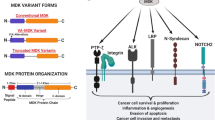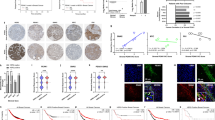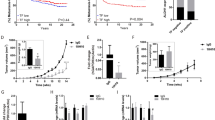Abstract
Within the tumor, malignant and stromal cells support each other by secreting a wide variety of growth factors and cytokines, allowing tumor growth and disease progression. The identification and regulation of those key factors in this crosstalk has opened the opportunity to develop new therapeutic strategies that not only act on the tumor cells but also on the stroma. Among these factors, S100A7 protein has gained interest in the last years. With key roles in cell motility its expression correlates with increased tumor growth, angiogenesis and metastatic potential. This work aims to deepen in the role played by extracellular S100A7 in the tumor microenvironment, offering a new integrative insight of its mechanism of action on each cellular compartment (tumor, endothelial, immune and fibroblast). As a result, we demonstrate its implication in cell migration and invasion, and its important contribution to the formation of a proinflammatory and proangiogenic environment that favors tumor progression and metastasis. Furthermore, we define its possible role in the pre-metastatic niche formation. Considering the relevance of S100A7 in cancer progression, we have developed neutralizing monoclonal antibodies, reporting for the first time the proof of principle of this promising therapeutic strategy for cancer treatment.
This is a preview of subscription content, access via your institution
Access options
Subscribe to this journal
Receive 50 print issues and online access
$259.00 per year
only $5.18 per issue
Buy this article
- Purchase on Springer Link
- Instant access to full article PDF
Prices may be subject to local taxes which are calculated during checkout







Similar content being viewed by others
References
Chen F, Zhuang X, Lin L, Yu P, Wang Y, Shi Y et al. New horizons in tumor microenvironment biology: challenges and opportunities. BMC Med 2015; 13: 45.
Quail DF, Joyce JA . Microenvironmental regulation of tumor progression and metastasis. Nat Med 2013; 19: 1423–1437.
Limaverde-Sousa G, Sternberg C, Ferreira CG . Antiangiogenesis beyond VEGF inhibition: a journey from antiangiogenic single-target to broad-spectrum agents. Cancer Treat Rev 2014; 40: 548–557.
Heldin CH . Targeting the PDGF signaling pathway in tumor treatment. Cell Commun Signal 2013; 11: 97.
Yamada T, Takeuchi S, Kita K, Bando H, Nakamura T, Matsumoto K et al. Hepatocyte growth factor induces resistance to anti-epidermal growth factor receptor antibody in lung cancer. J Thorac Oncol 2012; 7: 272–280.
Donato R, Cannon BR, Sorci G, Riuzzi F, Hsu K, Weber DJ et al. Functions of S100 proteins. Curr Mol Med 2013; 13: 24–57.
Bresnick AR, Weber DJ, Zimmer DB . S100 proteins in cancer. Nat Rev Cancer 2015; 15: 96–109.
Leclerc E, Vetter SW . The role of S100 proteins and their receptor RAGE in pancreatic cancer. Biochim Biophys Acta 2015; 1852: 2706–2711.
Padilla L, Dakhel S, Hernandez JL . S100 to receptor for advanced glycation end-products binding assay: looking for inhibitors. Biochem Biophys Res Commun 2014; 446: 404–409.
Chen H, Xu C, Jin Q, Liu Z . S100 protein family in human cancer. Am J Cancer Res 2014; 4: 89–115.
Klingelhofer J, Grum-Schwensen B, Beck MK, Knudsen RS, Grigorian M, Lukanidin E et al. Anti-S100A4 antibody suppresses metastasis formation by blocking stroma cell invasion. Neoplasia 2012; 14: 1260–1268.
Schweizer MT, Carducci MA . From bevacizumab to tasquinimod: angiogenesis as a therapeutic target in prostate cancer. Cancer J 2013; 19: 99–106.
Hernandez JL, Padilla L, Dakhel S, Coll T, Hervas R, Adan J et al. Therapeutic targeting of tumor growth and angiogenesis with a novel anti-S100A4 monoclonal antibody. PLoS One 2013; 8: e72480.
Dakhel S, Padilla L, Adan J, Masa M, Martinez JM, Roque L et al. S100P antibody-mediated therapy as a new promising strategy for the treatment of pancreatic cancer. Oncogenesis 2014; 3: e92.
Zhang H, Wang Y, Chen Y, Sun S, Li N, Lv D et al. Identification and validation of S100A7 associated with lung squamous cell carcinoma metastasis to brain. Lung Cancer 2007; 57: 37–45.
Al-Haddad S, Zhang Z, Leygue E, Snell L, Huang A, Niu Y et al. Psoriasin (S100A7) expression and invasive breast cancer. Am J Pathol 1999; 155: 2057–2066.
Tripathi SC, Matta A, Kaur J, Grigull J, Chauhan SS, Thakar A et al. Nuclear S100A7 is associated with poor prognosis in head and neck cancer. PLoS One 2010; 5: e11939.
Wolf R, Howard OM, Dong HF, Voscopoulos C, Boeshans K, Winston J et al. Chemotactic activity of S100A7 (Psoriasin) is mediated by the receptor for advanced glycation end products and potentiates inflammation with highly homologous but functionally distinct S100A15. J Immunol 2008; 181: 1499–1506.
Kataoka K, Ono T, Murata H, Morishita M, Yamamoto KI, Sakaguchi M et al. S100A7 promotes the migration and invasion of osteosarcoma cells via the receptor for advanced glycation end products. Oncol Lett 2012; 3: 1149–1153.
Shubbar E, Vegfors J, Carlstrom M, Petersson S, Enerback C . Psoriasin (S100A7) increases the expression of ROS and VEGF and acts through RAGE to promote endothelial cell proliferation. Breast Cancer Res Treat 2012; 134: 71–80.
Emberley ED, Niu Y, Njue C, Kliewer EV, Murphy LC, Watson PH . Psoriasin (S100A7) expression is associated with poor outcome in estrogen receptor-negative invasive breast cancer. Clin Cancer Res 2003; 9: 2627–2631.
Nasser MW, Qamri Z, Deol YS, Ravi J, Powell CA, Trikha P et al. S100A7 enhances mammary tumorigenesis through upregulation of inflammatory pathways. Cancer Res 2012; 72: 604–615.
Nasser MW, Wani NA, Ahirwar DK, Powell CA, Ravi J, Elbaz M et al. RAGE mediates S100A7-induced breast cancer growth and metastasis by modulating the tumor microenvironment. Cancer Res 2015; 75: 974–985.
Jinquan T, Vorum H, Larsen CG, Madsen P, Rasmussen HH, Gesser B et al. Psoriasin: a novel chemotactic protein. J Invest Dermatol 1996; 107: 5–10.
Kohler G, Milstein C . Continuous cultures of fused cells secreting antibody of predefined specificity. Nature 1975; 256: 495–497.
Robinson MJ, Tessier P, Poulsom R, Hogg N . The S100 family heterodimer, MRP-8/14, binds with high affinity to heparin and heparan sulfate glycosaminoglycans on endothelial cells. J Biol Chem 2002; 277: 3658–3665.
Jin Q, Chen H, Luo A, Ding F, Liu Z . S100A14 stimulates cell proliferation and induces cell apoptosis at different concentrations via receptor for advanced glycation end products (RAGE). PLoS One 2011; 6: e19375.
Sorci G, Riuzzi F, Agneletti AL, Marchetti C, Donato R . S100B causes apoptosis in a myoblast cell line in a RAGE-independent manner. J Cell Physiol 2004; 199: 274–283.
Vegfors J, Ekman AK, Stoll SW, Bivik Eding C, Enerback C . Psoriasin (S100A7) promotes stress-induced angiogenesis. Br J Dermatol 2016; 175: 1263–1273.
McCullough KC, Basta S, Knotig S, Gerber H, Schaffner R, Kim YB et al. Intermediate stages in monocyte-macrophage differentiation modulate phenotype and susceptibility to virus infection. Immunology 1999; 98: 203–212.
Peng Q, Cai H, Sun X, Li X, Mo Z, Shi J . Alocasia cucullata exhibits strong antitumor effect in vivo by activating antitumor immunity. PLoS One 2013; 8: e75328.
Bettum IJ, Vasiliauskaite K, Nygaard V, Clancy T, Pettersen SJ, Tenstad E et al. Metastasis-associated protein S100A4 induces a network of inflammatory cytokines that activate stromal cells to acquire pro-tumorigenic properties. Cancer Lett 2014; 344: 28–39.
Zhang H, Zhao Q, Chen Y, Wang Y, Gao S, Mao Y et al. Selective expression of S100A7 in lung squamous cell carcinomas and large cell carcinomas but not in adenocarcinomas and small cell carcinomas. Thorax 2008; 63: 352–359.
Wolf S, Haase-Kohn C, Lenk J, Hoppmann S, Bergmann R, Steinbach J et al. Expression, purification and fluorine-18 radiolabeling of recombinant S100A4: a potential probe for molecular imaging of receptor for advanced glycation endproducts in vivo? Amino Acids 2011; 41: 809–820.
Rich L, Whittaker P . Collagen and picrosirius red staining: a polarized light assessment of fibrillar hue and spatial distribution. Braz J Morphol Sci 2005; 22: 7.
McKeown SR . Defining normoxia, physoxia and hypoxia in tumours-implications for treatment response. Br J Radiol 2014; 87: 20130676.
West NR, Watson PH . S100A7 (psoriasin) is induced by the proinflammatory cytokines oncostatin-M and interleukin-6 in human breast cancer. Oncogene 2010; 29: 2083–2092.
Krop I, Marz A, Carlsson H, Li X, Bloushtain-Qimron N, Hu M et al. A putative role for psoriasin in breast tumor progression. Cancer Res 2005; 65: 11326–11334.
Emberley ED, Niu Y, Leygue E, Tomes L, Gietz RD, Murphy LC et al. Psoriasin interacts with Jab1 and influences breast cancer progression. Cancer Res 2003; 63: 1954–1961.
Chen L, Li J, Zhang J, Dai C, Liu X, Wang J et al. S100A4 promotes liver fibrosis via activation of hepatic stellate cells. J Hepatol 2014; 62: 156–164.
Choi SH, Park JY . Regulation of the hypoxic tumor environment in hepatocellular carcinoma using RNA interference. Cancer Cell Int 2017; 17: 3.
Moserle L, Jimenez-Valerio G, Casanovas O . Antiangiogenic therapies: going beyond their limits. Cancer Discov 2014; 4: 31–41.
Huber J, Furnkranz A, Bochkov VN, Patricia MK, Lee H, Hedrick CC et al. Specific monocyte adhesion to endothelial cells induced by oxidized phospholipids involves activation of cPLA2 and lipoxygenase. J Lipid Res 2006; 47: 1054–1062.
Junqueira LC, Bignolas G, Brentani RR . Picrosirius staining plus polarization microscopy, a specific method for collagen detection in tissue sections. Histochem J 1979; 11: 447–455.
Ducharme A, Frantz S, Aikawa M, Rabkin E, Lindsey M, Rohde LE et al. Targeted deletion of matrix metalloproteinase-9 attenuates left ventricular enlargement and collagen accumulation after experimental myocardial infarction. J Clin Invest 2000; 106: 55–62.
Laenkholm AV, Knoop A, Ejlertsen B, Rudbeck T, Jensen MB, Muller S et al. ESR1 gene status correlates with estrogen receptor protein levels measured by ligand binding assay and immunohistochemistry. Mol Oncol 2012; 6: 428–436.
Acknowledgements
The work was partially supported by Grants from the Spanish MINECO (RTC-2015-3318-1).
Author information
Authors and Affiliations
Corresponding author
Ethics declarations
Competing interests
The authors declare no conflict of interest.
Additional information
Supplementary Information accompanies this paper on the Oncogene website
Rights and permissions
About this article
Cite this article
Padilla, L., Dakhel, S., Adan, J. et al. S100A7: from mechanism to cancer therapy. Oncogene 36, 6749–6761 (2017). https://doi.org/10.1038/onc.2017.283
Received:
Revised:
Accepted:
Published:
Issue Date:
DOI: https://doi.org/10.1038/onc.2017.283
This article is cited by
-
CAV2 promotes the invasion and metastasis of head and neck squamous cell carcinomas by regulating S100 proteins
Cell Death Discovery (2022)
-
Fluid Flow Stimulation Modulates Expression of S100 Genes in Normal Breast Epithelium and Breast Cancer
Cellular and Molecular Bioengineering (2022)
-
Characteristics of pre-metastatic niche: the landscape of molecular and cellular pathways
Molecular Biomedicine (2021)
-
S100A7/Ran-binding protein 9 coevolution in mammals
Immunogenetics (2020)
-
S100 proteins as therapeutic targets
Biophysical Reviews (2018)



